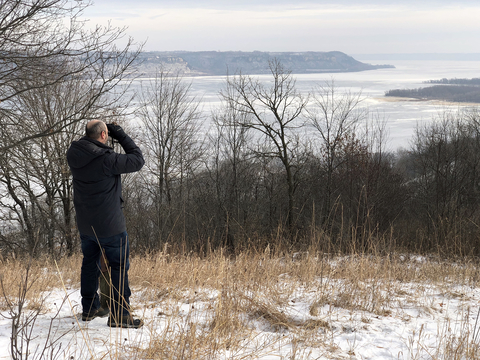Starting to get a little cabin fever this winter? We've got a list of activities to keep you busy for the rest of Minnesota's longest season! Each week we will share a new nature activity for you to try in order to beat the cold and enjoy the great outdoors.
Make sure you bundle up, and use your best judgment on those super chilly days—when the temps dip dangerously low, consider indoor nature activities instead.
Open water attracts animals of all sorts to drink, hunt and fish, and makes an ideal spot for enthusiasts to observe nature. It can be tricky to find a spot where there is open water all winter, but you can often find locations on rivers or fast-running trout streams. You could also check for open water near man-made features such as dams, power plants or lake and pond aerators. Make sure you've dressed appropriately for the weather before you head out, and always exercise caution near open water in winter.
Bring your binoculars
It may be hard to get close to the wildlife that gathers at open water, especially if you are making sure to stay safe on solid ground. In that case, it may be beneficial to bring a pair of binoculars on your visit in order to get great views of the animals you encounter. Learn how to properly adjust and use your binoculars before you go.
Once you find a good spot, settle in and watch what comes to the water. Watch what the different animals do and see if you can figure out why they are there. Eagles may be fishing or hunting the other critters that come to drink or feed. Waterfowl may be congregating in the open water. Small mammals will come to drink—watch for weasels, muskrats, otters or beavers. You may even spot deer or a fox.
Record your observations
Have your camera ready to catch the animals in action! If you have a camera with a zoom lens, you should be able to catch great photos of the animals you see without disturbing them. And don’t let those photos languish in your camera roll—you can share your observations with thousands of people using apps like eBird and iNaturalist! Adding your observations to these crowdsourcing platforms helps researchers and amateur naturalists alike learn about species distribution and abundance.


